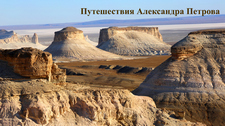You are here
Burabay natural park.
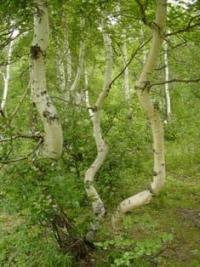
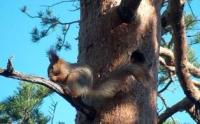
Ecological tours in parks Kazakhstan.
"On a relatively small patch of land, about 20 miles in diameter, mountain cliffs reminiscent of the Caucasus and Altai, covered with pine needles, form a wondrous combination with the element of water... From any hill, one can see either vast steppe expanses, or lush fields of the finest wheat, or the mirror-like surface of lakes, or granite mountains shrouded in dense pine needles."
Traveler Slovtsov. 1897.
Excursions to park Burabay.
Burabay (Borovoe) State National Nature Park is located at an altitude of 301.6 (Lake Bolshoe Chebachye) to 947.6 (Mount Kokshe Tau, formerly Sinyukha) meters above sea level, in northern Burabay District and northern Akmola Region.
Physical and geographical location of Burabay Park.
Burabay (Borovoe) State National Nature Park is located at an altitude of 301.6 meters (Lake Bolshoye Chebachye) to 947.6 meters (Mount Kokshe Tau, formerly Sinyukha) above sea level. It is located in the eastern part of the Kokshetau Upland, in the northwestern part of the Kazakh Uplands, in the northern Burabay District and in the northern Akmola Region.
Burabay (Borovoe) Nature Park was established in 2000 to protect lake-mountain-forest landscapes, promote tourism, and organize recreation for the population. The park is located in the Shchuchin District of the Akmola Region. The park covers an area of 83,511 hectares.
It is currently under the jurisdiction of the Presidential Property Management Department of the Republic of Kazakhstan. By Resolution No. 746 of the Government of the Republic of Kazakhstan dated July 19, 2005, a new "List of Specially Protected Natural Areas of National Significance" was approved, which includes Burabay National Park.
Back in 1935, the Borovoe Nature Reserve was established on approximately the same territory with the aim of studying, protecting, and enriching the flora and fauna of these unique places. It included a mountain-forest massif and the steppe areas and lakes adjacent to it to the north.
Unfortunately, the reserve existed for only 16 years and was closed in 1951, along with many other nature reserves in the former USSR. The national park occupies the Borovoe mountain-forest massif, located in the eastern part of the Kokshetau Upland (northwestern part of the Kazakh Uplands).
The highest point of the Kokshetau Range, 887 meters above sea level, is Mount Sinyukha (Kokshe Tau). The ridge is composed of deep-seated igneous rocks, primarily granites. Pegmatites, syenites, and porphyrites are also found.
Geology of Burabay Park.
Molten magma, once intruded from the depths of the earth, transformed the composition of surface sedimentary rocks. Metamorphic rocks formed - crystalline schists, quartzites, and siliceous limestones. Through millennia of erosion and weathering of the rock strata, stone blocks of unusually unique shapes emerged, resembling towers, walls, tables, and monsters.
To the east, the Kokshetau ridge is bordered by lower mountain sections, where gentle ridges, hills, and ridges alternate with depressions, plains, and hollows between the hills. The Borovskoye Massif has many picturesque lakes: Borovoe, Shchuchye, Maibalyk, Shortanakol, Kotyrkol, Bolshe-Chebache and Maloe-Chebache, Karasye, Svetloe, and others.
Most of the lakes are freshwater, while some are brackish. There is an extensive network of rivers and streams, including Sarybulak, Gromovaya, Kolchakty, Kilchakty, and the Imanaisky Stream.
Climate in Burabay Park.
Some of these streams connect the lakes. The region's climate is continental, with long, cold winters and short, hot summers. The average annual temperature is +25°C, with average January temperatures of -16.7°C and July temperatures of +18.6°C.
The absolute minimum temperature is -52°C, and the absolute maximum is +42°C. The frost-free period lasts 100-125 days, with early autumn frosts typical. Annual precipitation is approximately 300 mm, with a maximum in summer. Snow cover sets in in October and melts in April.
Soils in Burabay Park.
The soils in Borovoe National Park are brown earth or soddy-aurozem, fragmented and shallow. Most of the fine earth formed by weathering is carried downslope, leaving a significant surface area exposed. However, some fine earth accumulates in rock crevices, depressions, and on flat boulder surfaces.
Pine seedlings emerge in these areas, followed by undergrowth and mature trees, whose roots penetrate the crevices to considerable depths. Pines grow primarily on granite lowlands, but in some places they are also found on quartzite-schist ridges and ridges.
Like other island pine forests in Kazakhstan, the Burabai Massif is one of the remaining pockets of almost continuous coniferous and mixed forests that stretched from the eastern slopes of the Southern Urals to the western foothills of the Southern Altai during the Pleistocene.
During that period, the humid and cool climate created favorable conditions for the penetration of forest flora and fauna from the northern regions into the hills. Some of these relict species survive to this day. Later, during the Holocene, cyclical climate changes caused the forest area to expand and contract, and over time, the pine forests took on an island-like character.
Subsequently, especially over the last two centuries, forest loss has been driven by human influence. The main forms of this influence include logging, forest fires, and grazing, resulting in the complete disappearance of some small islands of pine forests, while others have shrunk significantly or become sparse forests.
Flora of Burabay natural park.
Burabai forest area is located in the steppe zone, in the subzone of mixed-grass steppes. It is home to 757 plant species, including 95 rare and endangered. Pine occupies the largest area of the forest. Pine forests grow in lowlands, on gentle and steep slopes, on the summits of hills and ridges, and on rocky mountain ridges.
Depending on the location and growing conditions, several types of pine forests are distinguished: stony-rocky pine forests, stony-lichen pine forests, grassy-mossy pine forests, and lowland pine forests. In wetter pine forests, pine trees (warty and downy birch), and aspen grow alongside the pine.
The shrub layer is poorly developed, especially in dry pine forests. Rose hips, cotoneaster, hawthorn, juniper, willow, spirea, currant, and raspberry are found. The grass cover is sparse in the dry, rocky pine forests and quite dense in the lowlands.
Many boreal relics are present - wintergreens, ferns, horsetails, club mosses, sedges, twinflowers, stone brambles, lingonberries, and, in some places, cranberries. In many places, boulders and tree trunks are overgrown with lichens, while in wetter areas, green mosses cover them. Some plants have become rare.
Red Book of Kazakhstan lists the round-leaved sundew, large-flowered lady's slipper, true lady's slipper, club moss, marsh helleborine, umbrella wintergreen, fuchsian dactylorhiza, deer cladina (lichen), and sticky alder (or black alder). Only two dozen black alder trees are known to grow on the eastern shore of Lake Shchuchye.
Other rare species in this region include viburnum, bird cherry, cranberry, rock currant, common juniper, bogbean, Siberian iris, narrow-leaved cotton grass, European starflower, twinflower, and lady's foot. The flora includes many medicinal, edible, ornamental, and other useful plants.
Along the outskirts of Lakes Karasye, Svetloye, and Shchuchye, relict peat bogs have been preserved, lying far south of their main range in the forest zone of Western Siberia and the Urals. Here, open sphagnum bogs are found, overgrown with low-growing pine ("ryamy") or birch forests with an admixture of pine ("sogry").
They have a distinctly boreal appearance and contrast sharply with the surrounding steppe pine forests.
Bogs and their surroundings harbor the greatest number of northern plants found in the Kazakh Uplands:
lingonberry, cranberry, twinflower, sedge, horsetail, wintergreen, cotton grass, goodayera, wintergreen, ramishia, white-throated pine, and others.
Northern plants: lingonberry, cranberry, twinflower, sedge, horsetail, wintergreen, cotton grass, goodayera, wintergreen, ramishia, white-throated rhizome, and others. The peat layer of the bogs reaches three meters in thickness. Fallen trees, their debris, and protruding roots are covered with moss, creating the image of a primeval swamp thicket.
The vertebrate fauna comprises 305 species, including 87 rare and endangered. Ungulates include Siberian roe deer, wild boar, and elk.
Fauna of Burabay Nature Park.
In the 1960s, an attempt was made to reacclimatize the maral that previously inhabited the area. However, hybrid Askanian deer were subsequently introduced into these same forests, where they multiplied and now inhabit the Borovskoy forest area.
Carnivores include wolves, foxes, corsac foxes, badgers, Siberian weasels, ermines, weasels, steppe polecats, pine martens, and lynxes. American minks have also established themselves in the forest; the initial population consisted of animals that escaped from fur farms.
An attempt to reintroduce brown bears, which previously inhabited these forests, was unsuccessful. Although the introduced bears have already produced offspring, they were unable to survive in the densely populated area, and the animals gradually disappeared.
Rodents include voles, mice, and rats, and the Teleut squirrel has been successfully reintroduced. Mountain hares are common, and brown hares can be found along the forest edges. Rock crevices and attic spaces are inhabited by bats - the northern bat, the common noctule, the pond bat, the water bat, and Brandt's bat.
Insectivores include the common and long-eared hedgehogs and several species of shrews. The pine marten is listed in the Red Book of Kazakhstan. Hunting grounds include all ungulates and predatory animals (except martens), hares, muskrats, and squirrels.
The fauna includes over 200 bird species. Birds of prey include the golden eagle, the imperial eagle, the greater spotted eagle, goshawks (goshawks and sparrowhawks), marsh harriers, hen harriers, common kestrels, hobby falcons, red-footed falcons, eagle owls, and long-eared owls.
Common birds include rooks, magpies, tree sparrows, turtle doves, cuckoos, rollers, orioles, tree pipits, whinchats, black-headed buntings, thrushes, woodpeckers, tits, and others. Greylag geese, mallards, pintails, goldeneyes, red-breasted mergansers, coots, grey herons, grebes, gulls, and waders nest on the lakes.
During migration, the number of waterfowl on the lakes increases significantly. The golden eagle, imperial eagle, eagle owl, and common crane are listed in the Red Book of Kazakhstan for Burabay Park. Hunting grounds include black grouse, gray and willow partridges, quail, wood grouse, coots, ducks, geese, and waders.
Reptiles include sand lizards, viviparous lizards, steppe and common vipers, grass snakes, and ornate racers. Amphibians include green toads, sharp-nosed frogs, and common frogs. The lakes are rich in fish, including perch, roach, pike, ide, crucian carp, and tench.
The invertebrate fauna, although poorly studied, likely numbers several thousand species. Several insect species are listed in the Red Book of Kazakhstan: the beautiful maiden (dragonfly), the steppe dybka and servile sevchuk (grasshoppers), the steppe scolia (wasp), and the Polish mealybug.
The latter species is the source of the natural dye carmine. For the stunning beauty of the landscape, vacationers call the area around Borovoe the "Switzerland of Kazakhstan."
Lakes in Burabay Nature Park and their sights.
The deep, clear lakes located at the foot of the mountains, surrounded by granite massifs and pine forests, lend a special charm to these places. Lakes Borovoe, Shortankol, Shchuchye, Karasye, Bolshoe, Maybalyk, Maloe and Big Chebachye, and others are well-known.
Long-term erosion and weathering have created exotic rocks and hills here. The most popular of these are Okzhetpes, Zhumbaktas (Sleeping Knight), Berkut, Camel, and Musk Deer. Particularly unique is the Sphinx – a rock jutting out of Lake Borovoe, resembling the giant head of an Egyptian sphinx.
Borovoe mountain-forest complex is home to many holiday homes, sanatoriums, tourist centers, and hiking trails. Borovoe resort is very well known. The national park aims to preserve unique landscapes and restore damaged natural systems.
For this purpose, several zones with different protection and use regimes are designated within the park: a protected area, a protected and recreational area, a recreational and economic area, and a buffer zone. Scientists are conducting research to study and identify ways to preserve and restore the pine forest - the national park's primary asset.
Geographical coordinates of Burabay National Park: N53°02'01 E70°15'56




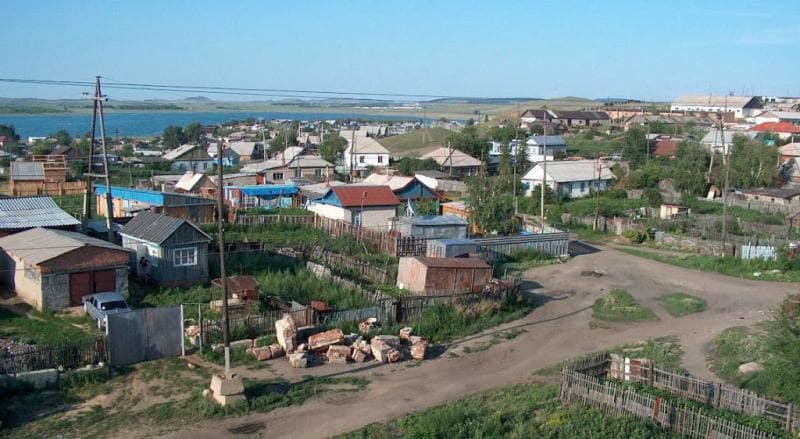



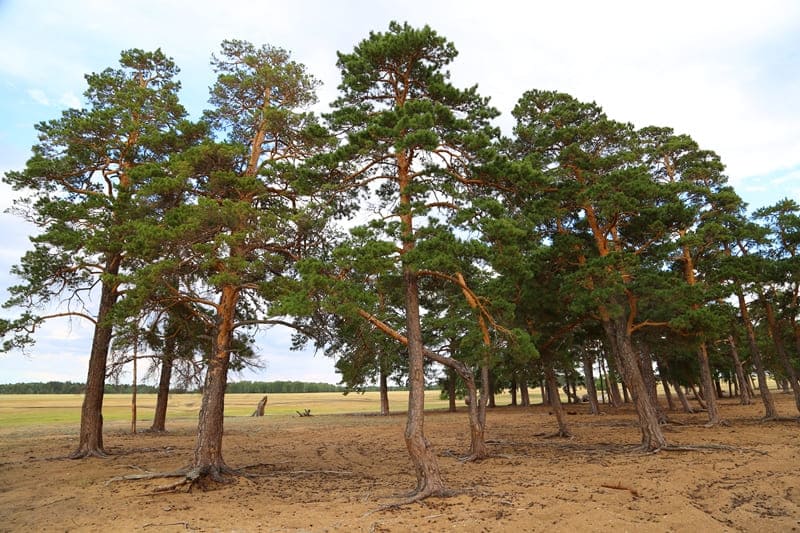

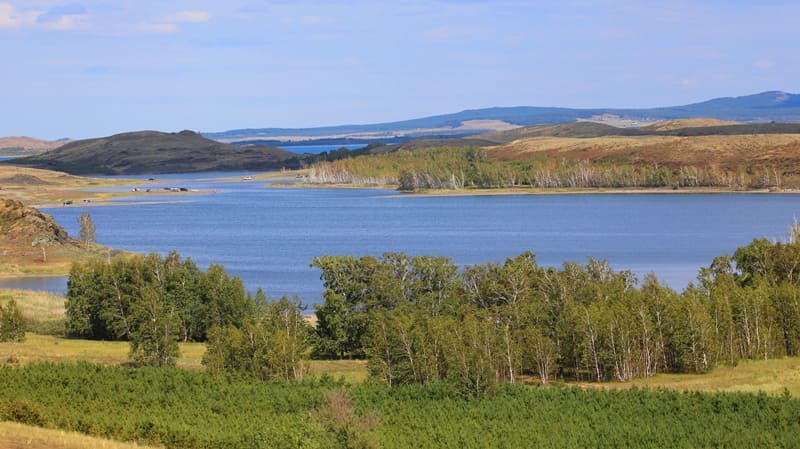

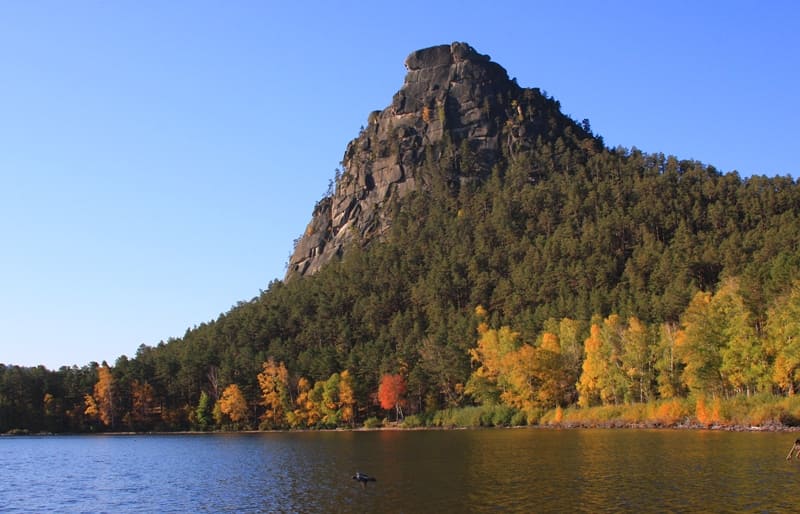
Authority:
Nature Reserves and National Parks of Kazakhstan. Almaty, 2005, N.P. Ogar, A.A. Ivaschenko.
Photos by:
Alexander Petrov.






